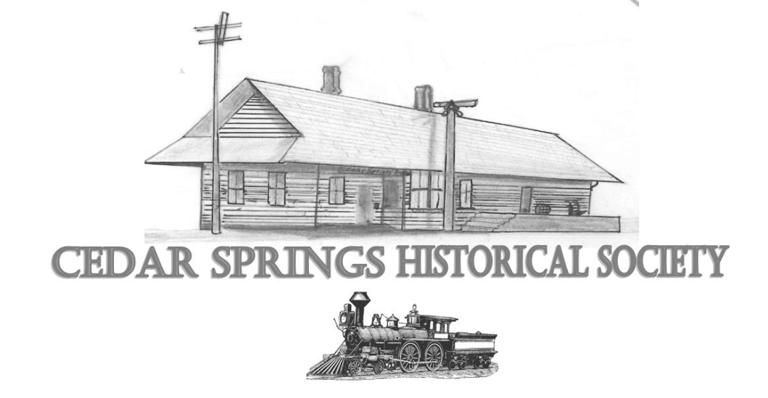Free picture Taking Opportunity
Bring your family to the museum to take a Beautiful Christmas picture. We can take the picture for you and print a copy free of charge. Any Wednesday until 5pm and Dec 6th 11:00 am to2:00 pm.
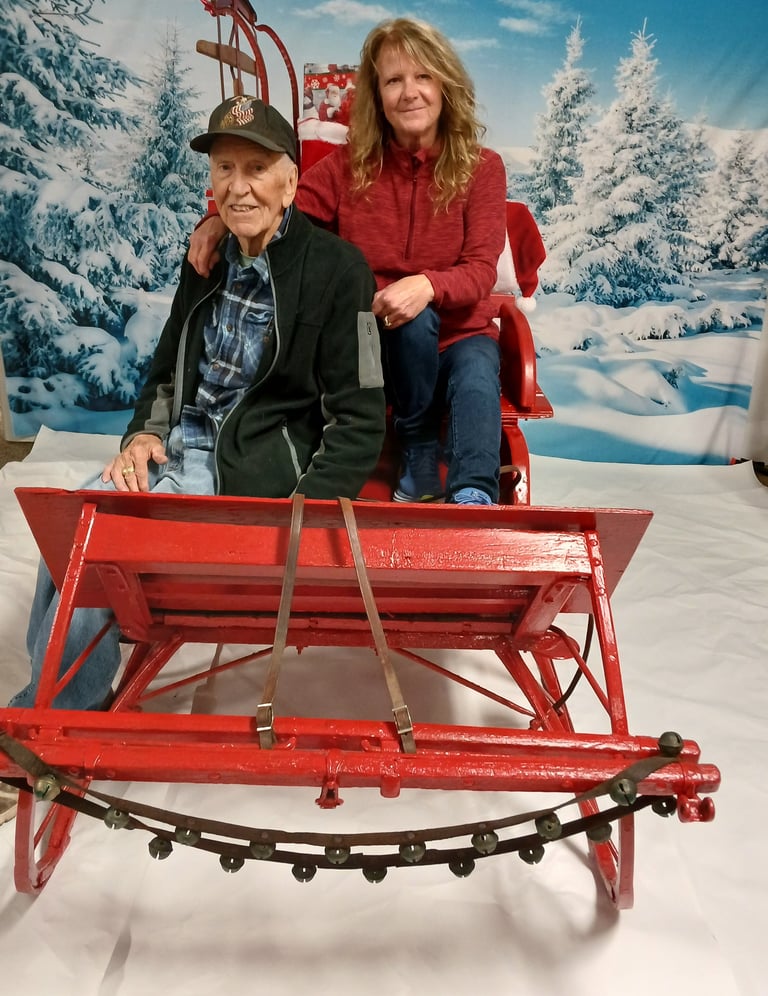


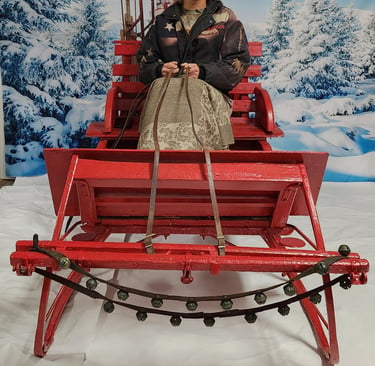
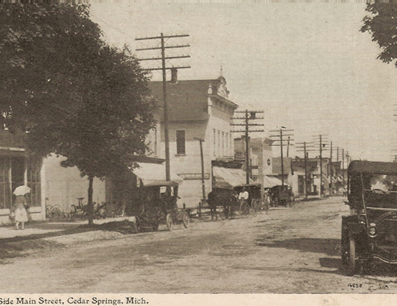

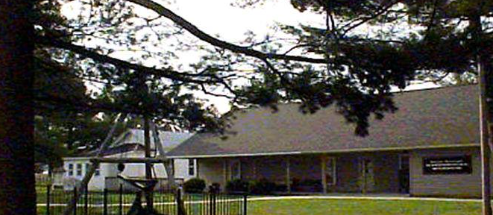

Home
Welcome to the Cedar Springs Historical Society and Museum. We are a fun-loving community of history-enthusiasts. Come on over on wednesday's for cookies, coffee and a little bit of history.
Just a reminder, we are closed when the Cedar Springs Schools close due to weather.
Step back in time as you visit the Cedar Springs Museum or tour the one-room Payne School that was moved to Morley Park in 1971. The school has been renovated to reflect the century long era in public education when one teacher, lodging with a school family, taught all eight grades. In Michigan's early development, land for these schools was reserved as townships were established. As the population in the townships increased, more schools were established so that pupils would not have to walk more than two or three miles to school.
Established as a farming and lumber town in 1856, Cedar Springs boasted numerous lumber and shingle mills. For a number of years, it was the northern terminus of the Grand Rapids and Indiana Railroad (Pennsylvania) and also was the crossing point for east-west Toledo, Saginaw, and Muskegon (Grand Trunk) Railroad.
Among the museum's displays you'll find a turn of the century home, the old general store, Native American history, lumbering, farming and Railroad displays. Located outside the Cedar Springs Museum in Morley Park, you will find a stump puller that was used to remove stumps in the area so that the land could be farmed.
The Michigan Legislature incorporated Cedar Springs as a village in March of 1871. At the time it was a major hub for timber history. As a result of the logging activity a unique enterprise began in Cedar Springs. Red Flannel Garments were sold here, but were not made here until 1952 when Mrs. Mae Oppenneer started making them in her home and later sold the business to Mrs. Sally Wall. Mrs. Wall established the Red Flannel Factory that was in operation for about forty years. That business continued beyond the lumber industry era, and still exists today as a viable part of the community.
The Cedar Springs Historical Museum is located in Morley Park just off south Main Street.





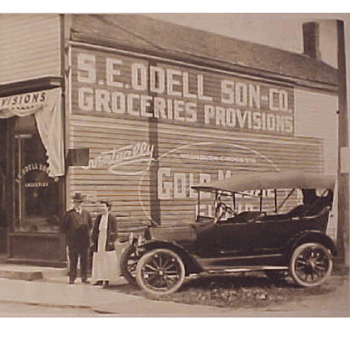
The Wolverine Clipper was published in Cedar Springs from December 29, 1869 through April 17, 1878, becoming the Cedar Springs Clipper from April 24, 1878-October 19, 1983.These papers are all on microfilm and can be viewed on our reader. Since the demise of the Clipper, the Post has become Cedar Springs weekly newspaper. Most of those issues, 1992 to the present can be perused at our facility. The Bugle, a monthly periodical covering mainly local events, was first published on June 25, 1984. All copies to date are contained in 4 large notebooks and shelved for use, in the genealogy department.
We are exceptionally pleased with the wide assortment of vital records we have been able to accumulate. Burial listings are available for these townships in Kent County:
Algoma, Cannon, Courtland, Gratton, Nelson, Oakfield, Plainfield, Solon and Spencer. Other areas of interest are some records of burials in the counties of Genesee, Marquette, Newaygo, Ottawa and Van Buren.
Death notices, obituaries and memorials have been compiled by our volunteers into a 5 volume set of notebooks thus far. We also have a few vital records for some towns in other states.
A few more miscellaneous categories of records that could be of help are:
Church records; Cedar Springs School yearbooks; Journal of Cedar Springs High School Graduates, 1880-1960, With Married Names and Addresses; Directories; Plat maps; Tax Records; Federal Land Patents, Kent County Michigan, Original Land Patents Granted by the United States Government in the State of Michigan from 1837-1875, plus, our many books in the reference section.
If you are unable to visit our facility in person, we can make a search of our records for a fee of $10.00 per hour, plus 25 cents per page if copies are required.
In addition to the many displays, the museum offers the following services:
Genealogy assistance for Cedar Springs area
Census information for research
Research done for you - fees available by contacting
Microfilm access
Yearbooks from Cedar Springs [ some years ]
Composite pictures of Classes in early school years
Payne Schoolhouse is available for elementary classes
Maps and Plat books 1800's-1900's
Cedar Springs History
You may contact the museum staff by mail, email or phone at the following,
Cedar Springs Historical Museum
PO Box 296 60 Cedar Street
Cedar Springs MI 49319-0296
E-mail: cedarspringsmuseum@gmail.com
Telephone: 616-696-3335
Open Wednesdays 10am - 5pm All Year. Museum Closing, When the Cedar Springs Schools are closed due to weather conditions, the museum will also be closed.
Special hours and tours by appointment are available as well as use of the one room schoolhouse. The schoolhouse is set up and ready for your students!
Contact Cedar Springs Museum
Reach out to us for inquiries about our historical collections or research services in Cedar Springs, Michigan, and nearby areas.
Contact
Sharon Jett
Support
Cedarspringsmuseum@gmail.com
PODCAST EPISODE
Listen to an episode about the Cedar Springs Library with Museum Director Sharon Jett on the spotify podcast "Preservation Oaks". Click here!
CONTACT
mailing list sign up
cedarspringsmuseum@gmail.com
(616)696-3335
© Cedar Springs Museum 2024. All rights reserved. Website by ebentitusgardner.com
123 Main St. Cedar Springs, MI, 49319
hours
Every Wednesday, 10 AM to 5 PM, unless Cedar Springs Public Schools are closed due to weather advisory.
